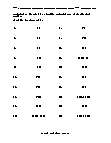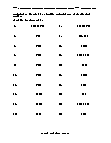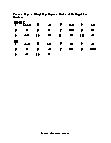Simplify Squares Roots Worksheets
How to Simplify Square Roots with Negative Numbers We have studied the square roots and are pretty familiar with the positive numbers appearing under the square root symbol. But sometimes we get negative numbers under the radical sign, and things get a bit complicated as we know there aren't any defined square roots of the negative values. However, in some situations, negative radical are easier to solve. For example, 3√-8 can be solved easily. As we all know (-2). (-2). (-2) = -8 and making the answer -2. Particularly in cube roots problems, it is easy to multiply the negative values three times and get a negative answer. Complications arise when we have a problem like √-16. In this problem, there is no way that we can multiply this number with itself and get a negative number. In fact, the square root of a negative number is not possible among the real numbers. To solve this complication, a new number, 'i,' was invented and termed as the imaginary number. The imaginary number 'i' is the square root of the negative number. √-1 = i The imaginary is unique as we square this number; we get a negative number as a result. i2 = (√-1)2 = -1 The simplification of a negative radical is the same as the ordinary radicals but with the minor addition of the imaginary number 'i'. √-16 = √(-1) . 16 = √-1 . √16 = i . √16 = i . 4 = 4i
-
Basic Lesson
Demonstrates general rules of Simplifying Squares Roots. Simplify the remaining part of the radical.
View worksheet -
Intermediate Lesson
Explores how to approach simplifying complex Squares Roots with negative numbers.
View worksheet -
Independent Practice 1
Contains 20 Simplify Squares Roots problems. The answers can be found below. Simplify in terms of i.
View worksheet -
Homework Worksheet
Simplify Squares Roots problems for students to work on at home. Example problems are provided and explained.
View worksheet
That's Learning!
This mathematician has made one of the biggest advancements
in human learning by working with logarithms and discovering a method of
mechanically multiplying, dividing and taking square and cube roots using
what he called "bones." Who is he? Answer: John Napier.







